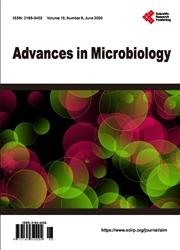Synthetic Biology Construct of Ebola Virus in Bacteria Surrogate Is Stable and Safe for Rapid Detection Studies in a BSL-2 Laboratory Setting
引用次数: 0
Abstract
Rapid detection of virulent pathogens during an outbreak is critical for public health advisories and control of the disease in a population. While many molecular techniques for point of care and clinical diagnosis abound, the US experience with the COVID-19 testing in the early stages of the pandemic underscores the critical importance of determining the appropriate target gene(s) with in-built controls that reliably detect pathogens with high sensitivity and specificity. Assays and research for diagnostics and therapy could be slowed during an epidemic because access to the required BSL-3 and BSL-4 laboratories are limited. So, during the 2014 West Africa Ebola outbreak, we tested the hypothesis that using synthetic cDNA of Ebolavirus in a bacteria surrogate (fit for all lab settings), would remain unmutated and safe after several generations, serving as an effective positive control in research settings, self test and point-of-care detection platforms. Primers were designed for the detection and quantification of the nucleoprotein (NP) gene of the 2014 Makona Ebola strain (KR781608.1, 733 1332 bp). To test the stability of artificially inserted translation arrest in the Orf of the model gene, it was edited to include three STOP codons in the RNA transcript using SNAP GENE. The segment was then spliced into a high copy number plasmid, cloned into One Shot TOP10 Escherichia coli (Invitrogen), and tested for stability and safety by periodic subculture, extraction and sequencing. Unlike COVID-19, rapid detection of blood-borne etiologies like Ebola requires optimized protocols for blood matrix. Using real-time PCR and newly designed primer pairs, the EBOV surrogate was detected and enumerated in human blood and regular broth and buffers. Based on aligned sequence analysis, the EBOV synthetic NP gene was stable (>99.9999% similarity coefficient) for at least 3 months. Detection sensitivity in broth and blood was at least 100 cells/ml or about 5.8 How to cite this paper: Esiobu, N., Holmes, D., Coarsey, C., Asghar, W. and Stone, B. (2022) Synthetic Biology Construct of Ebola Virus in Bacteria Surrogate Is Stable and Safe for Rapid Detection Studies in a BSL-2 Laboratory Setting. Advances in Microbiology, 12, 25-41. https://doi.org/10.4236/aim.2022.121003 Received: November 24, 2021 Accepted: January 25, 2022 Published: January 28, 2022 Copyright © 2022 by author(s) and Scientific Research Publishing Inc. This work is licensed under the Creative Commons Attribution International License (CC BY 4.0). http://creativecommons.org/licenses/by/4.0/在BSL-2实验室环境中,细菌替代物中埃博拉病毒的合成生物学构建稳定、安全,可用于快速检测研究
在疫情期间迅速发现毒性病原体对于公共卫生咨询和在人群中控制疾病至关重要。虽然有许多用于护理点和临床诊断的分子技术,但美国在大流行早期阶段进行COVID-19检测的经验强调了通过内置控制来确定适当的靶基因的重要性,这种内置控制能够可靠地检测出具有高灵敏度和特异性的病原体。在流行病期间,用于诊断和治疗的检测和研究可能会放缓,因为获得所需的生物安全标准3和生物安全标准4实验室的机会有限。因此,在2014年西非埃博拉疫情期间,我们检验了在细菌替代物(适用于所有实验室环境)中使用埃博拉病毒合成cDNA的假设,在几代后仍将保持不变和安全,在研究环境、自我测试和护理点检测平台中作为有效的阳性对照。设计引物用于2014年Makona埃博拉病毒株(KR781608.1, 733 1332 bp)核蛋白(NP)基因的检测和定量。为了测试在模型基因的Orf中人工插入翻译抑制的稳定性,使用SNAP gene编辑RNA转录本,在转录本中包含三个STOP密码子。将该片段剪接到高拷贝数质粒中,克隆到One Shot TOP10大肠杆菌(Invitrogen)中,通过定期传代、提取和测序检测其稳定性和安全性。与COVID-19不同,埃博拉等血源性病因的快速检测需要优化血液基质方案。采用实时荧光定量PCR和新设计的引物对,在人血、普通肉汤和缓冲液中检测和枚举EBOV代物。比对序列分析表明,EBOV合成NP基因至少稳定3个月(相似系数为bb0 99.9999%)。在高汤和血液中的检测灵敏度至少为100个细胞/ml或约5.8。本文引用方式:Esiobu, N., Holmes, D., Coarsey, C., Asghar, W. and Stone, B.(2022)在BSL-2实验室环境中,细菌替代物中的埃博拉病毒合成生物学构建是稳定和安全的快速检测研究。微生物学进展,12,25-41。https://doi.org/10.4236/aim.2022.121003收稿日期:2021年11月24日收稿日期:2022年1月25日出版日期:2022年1月28日版权所有©2022 by作者和Scientific Research Publishing Inc。本作品采用知识共享署名国际许可协议(CC BY 4.0)。http://creativecommons.org/licenses/by/4.0/
本文章由计算机程序翻译,如有差异,请以英文原文为准。
求助全文
约1分钟内获得全文
求助全文

 求助内容:
求助内容: 应助结果提醒方式:
应助结果提醒方式:


